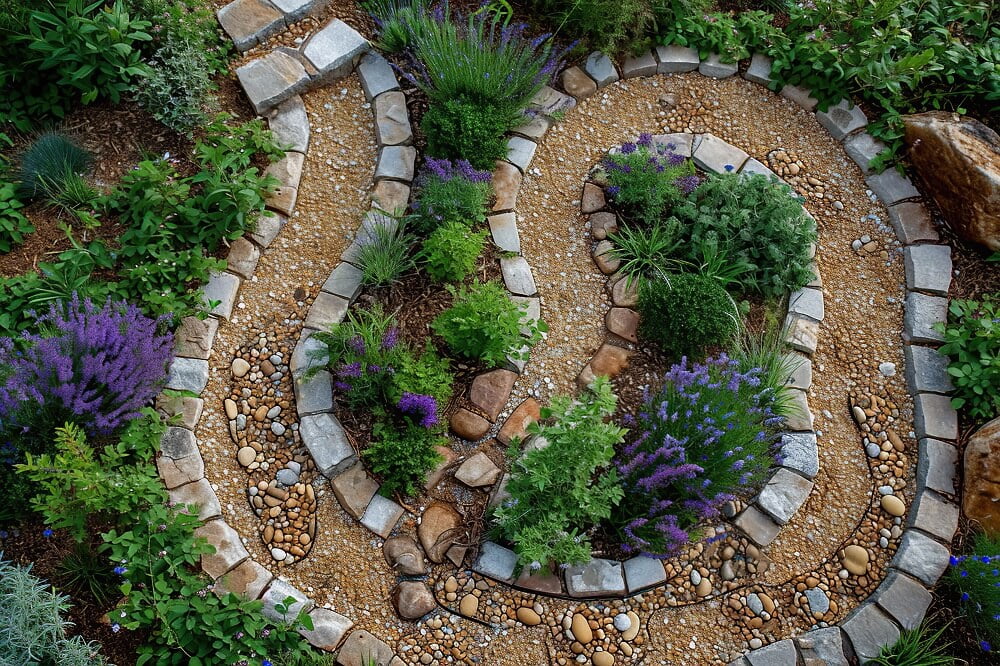
Paths in the garden are about comfort and convenience. They provide easier movement through the space, especially in wet conditions when the soil can be slippery or muddy. Well-planned paths also allow easier access to different areas of the garden, such as flower beds, the vegetable garden, the gazebo or the relaxation area. By designating paths, we can better organise the garden space, which affects its functionality and aesthetics.
Furthermore, paths can become not only a practical but also a decorative element, giving the garden a unique character. A good path design can harmonise the entire space, giving it elegance and order. To further enhance the aesthetics and durability of paths, consider using garden edging to help:
These types of solutions help to realise the full potential of any garden space.
To build garden paths Various materials can be used. We can opt for classic natural stones, which blend perfectly with the plants and give the garden a rustic charm. Pavers are also becoming increasingly popular, offering a wide range of colours and designs. For modern arrangements, concrete slabs with a minimalist design will be ideal. Wooden composite decking, which combines the elegance of wood with durability and weather resistance, can also be an excellent alternative.
To improve the appearance and durability of paths, it is worth using suitable garden edging. They prevent paths from overgrowing with vegetation, which makes it easier to maintain order and cleanliness. In addition, edging emphasises the lines of paths, giving them a clear and aesthetic contour. Edging can also be made of various materials such as metal, wood or plastic. The latter option deserves special attention. They are robust and durable, plus they can be easily formed into any shape. For those who care about ecology, we recommend garden edging in 100% recycled from a Polish manufacturer.
Planning and laying out paths in the garden is a process that starts with an analysis of the site. The key is to identify, how to lay paths in the gardenso that they are functional and aesthetically pleasing. The natural terrain and existing vegetation should be taken into account to optimise the route of the paths and minimise interference with the surroundings. It is also important to designate main destination points, such as gazebos, ponds or flower beds, so that the paths effectively link these locations.
It is a good idea to mark the planned paths with string, coloured chalk or paint, which will allow you to get a better idea of the paths and make any adjustments. Remember that natural curves and gentle curves in paths add harmony and fluidity to the garden. The final decision on materials should take into account the style of the garden and its functionality, while providing an aesthetically pleasing and durable solution. Skilful laying out paths in the garden is the key to creating a space that is both beautiful and practical.
The work starts by digging a trench about 15–20 cm deep, depending on the type of substrate and the material of the path. Once the trench has been dug, a layer of geotextile is laid at the bottom to prevent weeds from overgrowing. We then pour in a layer of gravel or sand, which we carefully compact to ensure the stability of the substrate. On the prepared layer, place the material of your choice: stones, paving stones, concrete or wooden slabs. Remember to keep proper spacing and level the elements. After laying all the elements, fill in the gaps with fine sand and compact the whole again. Finally, install garden edging to stabilise the edges of the path. Their installation consists of placing them in the ground along the edge of the path and securing them with suitable anchors. They should be evenly and firmly set to ensure an aesthetically pleasing appearance and durability of the whole construction.